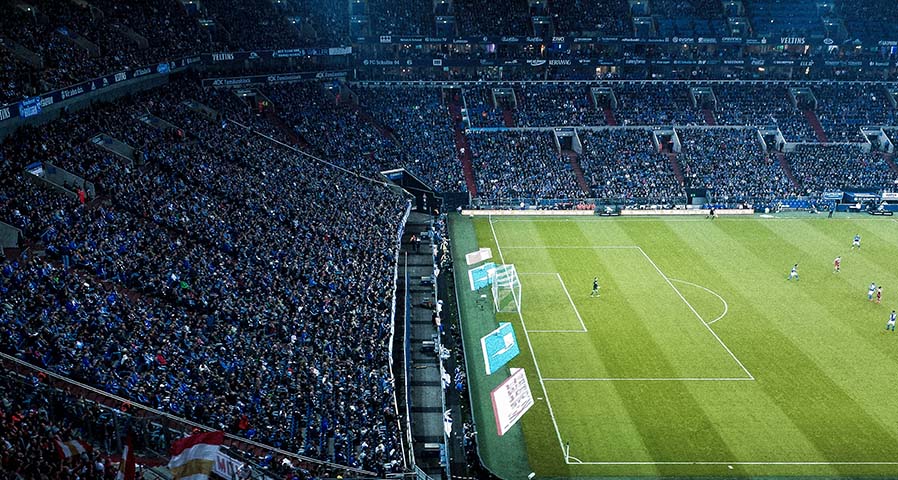Long-term cost savings of using LED stadium lights compared to MH lamps
The long-term cost savings of using LED stadium lights can be substantial, encompassing several key areas such as energy costs, maintenance expenses, and operational efficiencies. Here’s a detailed look at these savings:
1. Energy Cost Savings
· Reduced Energy Consumption: LED lights consume significantly less energy compared to traditional lighting options. For example, an LED light might use 60-75% less electricity than a metal halide lamp to produce the same amount of lighting.
· Lower Electricity Bills: The reduction in energy consumption directly translates to lower electricity bills. Stadiums, which often require lighting for extended periods, can see dramatic reductions in their energy costs.
2. Maintenance Cost Savings
· Longer Lifespan: LED lights typically last between 50,000 to 100,000 hours, whereas traditional lights such as metal halide or high-pressure sodium lamps may only last between 15,000 to 30,000 hours. The longer lifespan of LEDs means fewer replacements and less frequent maintenance.
· Reduced Labor Costs: With fewer bulbs to replace over time, the labor costs associated with maintaining stadium lighting are significantly reduced. This is particularly important in large stadiums where accessing and replacing lights can be labor-intensive and time-consuming.
· Lower Replacement Costs: The extended lifespan of LEDs means fewer purchases of replacement bulbs over time, resulting in additional savings.
3. Operational Efficiencies
· Instant On/Off Capability: LEDs provide instant illumination, eliminating the need for warm-up periods that traditional lights require. This can lead to energy savings, especially during times when lights are frequently turned on and off.
· Directional Lighting: LEDs can be precisely directed to illuminate specific areas, reducing light spill and ensuring that more of the light produced is effectively utilized. This efficiency reduces the number of lights needed to achieve the desired illumination levels.
· Reduced Heat Emission: LEDs emit very little heat compared to traditional lighting. This reduces the load on air conditioning systems, especially in enclosed stadiums, leading to additional energy savings.
4. Environmental Benefits and Compliance
· Reduced Carbon Footprint: By using less electricity, LED lights contribute to lower greenhouse gas emissions. This can help stadiums meet environmental regulations and standards, potentially avoiding fines and improving public relations.
· No Hazardous Materials: LEDs do not contain hazardous materials like mercury, making them easier and safer to dispose of. This can reduce disposal costs and environmental cleanup liabilities.
5. Improved Revenue Opportunities
· Enhanced Fan Experience: High-quality lighting can improve the viewing experience for fans, both in the stadium and for those watching broadcasts. Better lighting can lead to increased ticket sales and higher viewership ratings.
· Advertising and Sponsorship: Superior lighting quality can enhance advertising opportunities, making the stadium more attractive to sponsors. Bright, clear lighting can make advertisements and branding more visible and appealing.
Example of Cost Savings
To illustrate these savings, considering a hypothetical scenario where a stadium replaces 500pcs traditional 1500 watts metal halide lights with 500pcs 600 watts LED lights:
Energy Savings Calculation:
Traditional lights: 500 lights x 1,500 watts = 750,000 watts (750 kW)
LED lights: 500 lights x 600 watts = 300,000 watts (300 kW)
Energy savings: 750 kW - 300 kW = 450 kW
Assuming the lights are used for 2,000 hours per year, annual energy savings would be 450 kW x 2,000 hours = 900,000 kWh.
At an electricity rate of $0.10 per kWh, the annual cost savings would be 900,000 kWh x $0.10/kWh = $90,000.
Maintenance Savings Calculation:
Traditional mental halide lights might need replacement every 2-3years, whereas LEDs last min.5 years, usually 10 years, even 15 -20 years.
Conclusion:
Switching to LED stadium lights offers substantial long-term cost savings primarily through reduced energy consumption, lower maintenance costs, and operational efficiencies. These savings can be significant, improving the stadium’s bottom line while also providing environmental benefits and enhancing the overall experience for fans and players.


